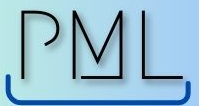Scrum is a term that may have originated from the game of rugby, where players huddle together to restart the game. However, in the business world, Scrum has a distinctly different meaning. It represents one of the most prominent and impactful agile project management methodologies used globally. This article delves deep into the intricacies of Scrum, its components, benefits, and potential challenges.
Background
Scrum, in its essence, is a framework that facilitates team collaboration on complex products. Born from the minds of Ken Schwaber and Jeff Sutherland in the early 1990s, it’s been adopted by a multitude of software development teams and other sectors due to its flexibility and emphasis on continuous improvement.
Core Principles of Scrum
1. Empirical Process Control:
Scrum is rooted in the empirical process theory, which believes that knowledge stems from experience and decision-making based on observation. The three pillars supporting this approach are transparency, inspection, and adaptation.
2. Self-organizing Teams:
Scrum trusts that the team members are the experts and are best placed to make decisions, allowing them autonomy.
3. Iterative Progress:
Work is segmented into short fixed-length iterations known as “sprints,” typically lasting two to four weeks. Each sprint aims to produce a potentially shippable product increment.
Main Components of Scrum
1. Roles
Product Owner:
The guardian of the product backlog, the Product Owner ensures that the team is working on tasks that offer the highest business value. They act as a bridge between the team and the stakeholders.
Scrum Master:
A facilitator who ensures that the team follows Scrum principles, practices, and rules. The Scrum Master shields the team from external interferences, ensuring optimal productivity during the sprint.
Development Team:
A group of professionals responsible for delivering potentially shippable increments (PSIs) of the product at the end of each Sprint.
2. Events
Sprint Planning:
At the beginning of each sprint, the team collaborates to decide on the set of product backlog items they will work on during that sprint.
Daily Stand-up:
A 15-minute event where the team discusses progress, plans for the day, and identifies blockers.
Sprint Review:
At the end of the sprint, the team showcases the work done during the sprint to stakeholders.
Sprint Retrospective:
A reflection event where the team discusses what went well, areas of improvement, and strategies for the next sprint.
3. Artifacts
Product Backlog:
An ordered list of everything needed in the product, managed by the Product Owner.
Sprint Backlog:
A set of product backlog items chosen for the Sprint, plus a plan for delivering them.
Increment:
The sum of all the product backlog items completed during a sprint and all previous sprints.
Benefits of Scrum
1. Flexibility:
Scrum embraces changes. When customer needs evolve, Scrum ensures the team can adjust to these changes, ensuring high-value delivery.
2. Faster Time-to-Market:
With each sprint producing a potentially shippable product increment, there’s an opportunity to go to market sooner.
3. Improved Product Quality:
Regular checks, reviews, and the iterative nature of Scrum enhance product quality.
4. Enhanced Collaboration:
Scrum fosters a collaborative environment where all team members have a say.
Challenges in Implementing Scrum
1. Resistance to Change:
Traditionalists may find Scrum’s approach unfamiliar and uncomfortable.
2. Misunderstanding the Role:
The roles in Scrum are distinct, and a misinterpretation can hinder the process.
3. Commitment is Essential:
Scrum demands commitment from all parties involved. Any laxity can affect the project’s success.
Conclusion
Scrum, as a project management methodology, is more than just a process; it’s a shift in mindset. It’s about collaboration, continuous feedback, and delivering value incrementally. While it does come with challenges, the benefits it offers make it a favorite among organizations aiming for agility, adaptability, and customer satisfaction. As the business environment grows increasingly complex, methodologies like Scrum become essential tools in navigating the waters of change and uncertainty.

